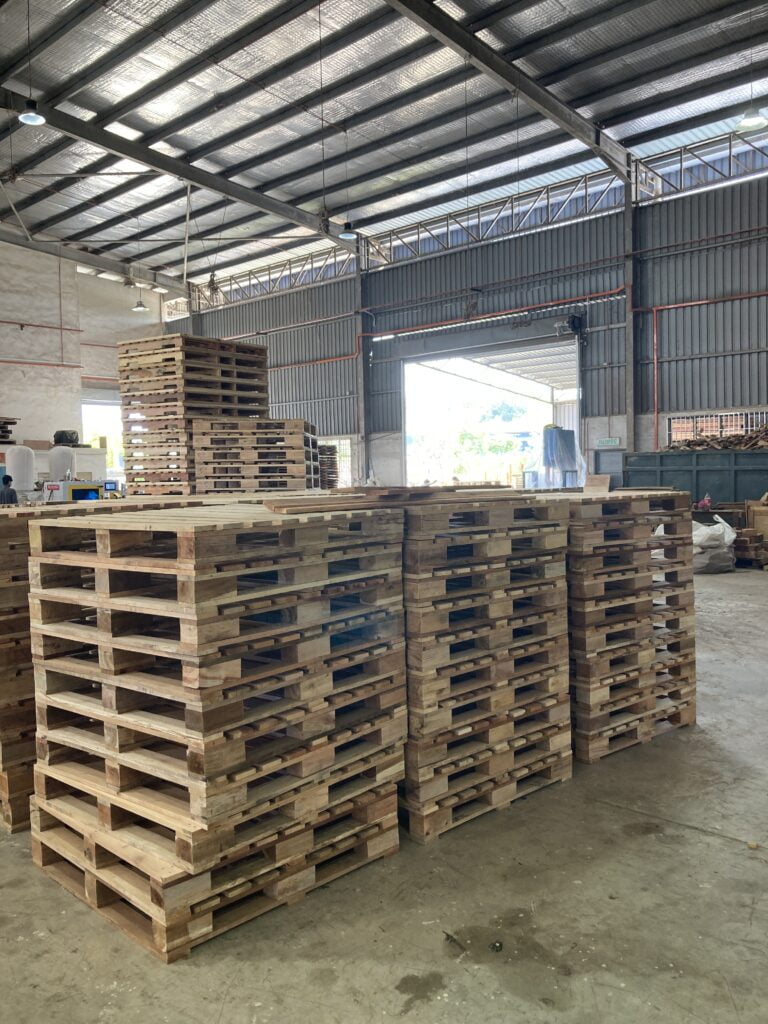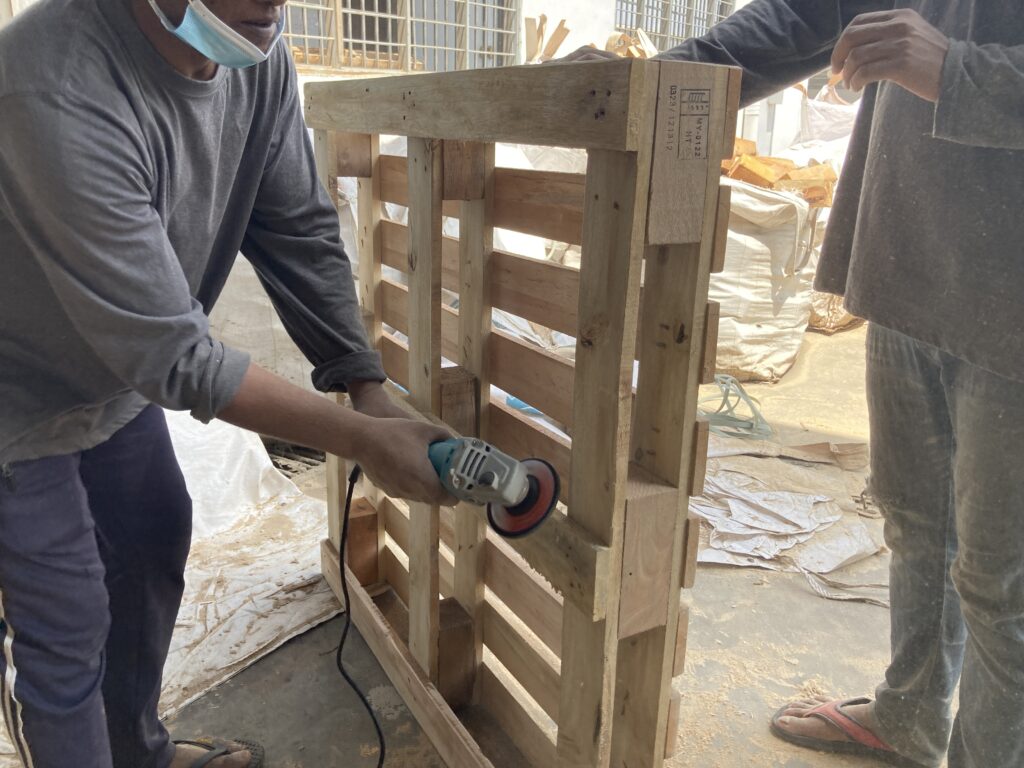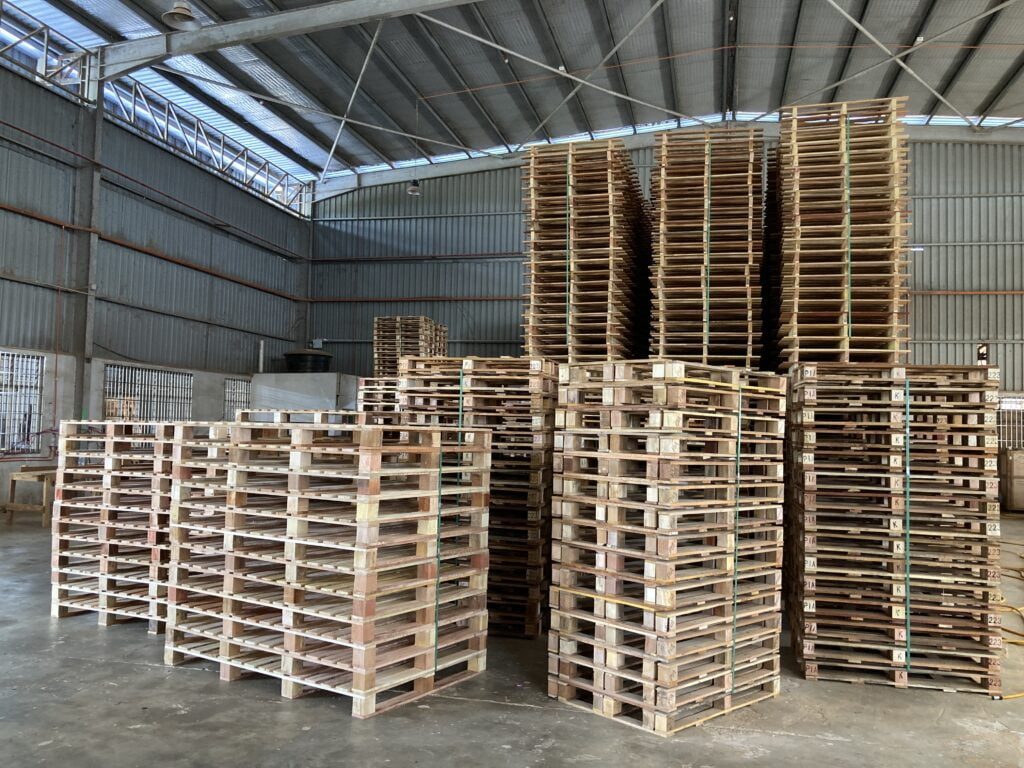The Life Cycle of a Wooden Pallet
The average wooden pallet’s life expectancy is three years. However, this does not account for the many repairs that may be required along the way.
This is how we can accurately predict the pallet’s life expectancy. Each pallet will be affected differently by damage, so no two pallets are the same when it comes to transporting and being exposed to the elements.
Warehouse owners can only give advice: Treat wooden pallets as vital machinery. Repair them immediately if there is damage. Recycle them if they are not up to the task.
They are not in control of everything, but they can rely on the efforts they make to ensure that the pallets remain durable and efficient.
Today’s post will share some tips to extend the shelf life of pallets, and how you can reuse them for more economical solutions.

1. Train employees on proper pallet handling
Human error and the need to move quickly are two of the main causes of pallet damage. You can reduce pallet damage by teaching employees how to load and manage pallets properly. This will increase the lifespan of wood pallets. Here are some tips that you can share with your employees.
Pallet handling tips
- Avoid pushing or dragging pallets on the floor.
- Align Forklift Slowly to avoid damaging the pallet’s lead board.
- Before lifting, insert the forklift tines and pallet jack fully.
- Do not drop pallets
- Avoid stepping on pallets. Do not step on pallets if the board has been reinforced with a stringer or block.
- Do not stack pallets higher than four to six feet. This allows them to be handled easily and prevents them from falling over, causing damage.
- Arrange pallets in a uniform fashion. Straighter stacks are less likely to tip over.
- Do not place pallets on their sides. They could easily tip over and cause damage to the pallet.
- Before transporting pallets, make sure you know the load capacity.
2. Consistently Repair Wooden Pallets
It is important to stress that you shouldn’t continue to use damaged pallets as they pose safety risks. However, you don’t have to throw away damaged pallets. You can still repair them for a fraction of the cost of buying new ones.

To get the best results, inspect your pallets regularly and make it a priority for them to be repaired at the sign of damage possible. This will ensure that they last as long as possible. Pallets that are slightly damaged don’t need to be thrown away. Don’t throw away pallets that are damaged. Instead, use what is good and fix the rest.
Broken boards can be replaced and reinforced with new stringers. This creates “almost new” pallets that will last for many years.
3. Avoid Moisture
Avoiding moisture is an important step to prolong the life expectancy for wooden pallets. Wooden pallets can be quickly damaged by moisture so avoid placing them in damp areas.
Even if the pallet appears fine, water damage can cause mould growth, which can weaken the pallet, and increase its chances of being damaged. You should store your pallets inside if possible. Also, make sure there is no water pooling on the trailer where the pallets will be transported.
4.Using Heat-Treated Pallets
While treated pallets will cost more, they could save you money. Untreated pallets can be easily damaged by insects, moisture, and inclement weather. This will reduce their lifespan. Virginia Tech research has shown that air-dried lumber is more effective than green lumber. Durability has improved by 43 percent.
5. Select The Right Pallets Design
Make sure your wooden pallets are made for the product you’re purchasing. Heavy items, odd-shaped items, and so on. Pallets that are specifically designed for the product should be used to transport them. Standard pallet sizes are appropriate. However, you should discuss with your pallet provider whether customized pallets might be a better choice.
The Pallet Design System (PDS), which can help you choose the best pallet design for your products, will ensure that your pallets last. The NWPCA’s website states that “The PDS structural analysis reduces concerns over human safety and health, and reduces or eliminates product damage that can result from poor pallet strength, stiffness or durability.”
6. Use a Pallet Recovery program
A pallet recovery, repair, and return program allows you to reduce costs and prolong the life of your pallets by ensuring consistent pallet repair.
Kato Wooden Sdb Bhd offers a recycled pallets recovery system that allows you to reuse the same pallet up to two to three times per annum for up to three years. This is about twice the average life span of a wood pallet.

7. Quality is the most important thing
Although it may be tempting to purchase pallets at lower initial costs, this industry is one where “You get what your pay for.” rings true. Pallets that are well-made will last longer than pallets that are poorly made, as they are more likely to distort under load.
To get the best value, select a high-quality pallet from the beginning. This will decrease the need to replace pallets that have a short life span and is less expensive.
8. Make Sure Your Pallets are Fully Protected
It is much easier to prolong the life of wooden pallets if each pallet is properly protected.
Many products can increase the life expectancy and durability of wooden pallets. These include plastic shields that can attach to pallets to add an extra layer of protection.
You can also use many forklift attachments, such as energy-absorbing bumpers, to make pallet transport easier and safer. These attachments will make your pallets last as long as possible.
Get the most out of your Pallets.
The life expectancy of wooden pallets is determined by how well they are maintained and if they are repaired promptly when they become damaged. These tips will help you create a more cost-effective pallet solution.
